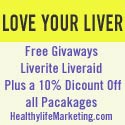

Arthritis Help by Michael Lemmon DVM
What are free radicals? They sound dangerous – and they are. You may have read about them recently in connection with the aging process and with degenerative diseases. How are they formed? What kind of damage do they do? Most importantly, how does the body protect itself against them?
Arthritis
One of the contributing causes of arthritis is the excess accumulation of free radicals in the joint capsule – the fluid-filled sac surrounding every joint in the body. This fluid, or “joint oil” is kept healthy with the help of enzymes produced by the body. The enzymes act like soap – they clean away the free radicals- keeping the joint properly lubricated and allowing free movement. Otherwise, the free radicals would slowly eat away the lining of the joint capsule, causing pain and swelling. Those with arthritic animals know the stiff, painful legacy of the disease, as joints get seemingly “frozen” into position.
What can be done about this? First, it helps to know where the free radicals come from. Free radicals are formed during normal cellular metabolism, when cells take in nutrients, assimi-late and utilize the nutrients, and then excrete the waste products. Some of these waste products are free radicals. Wherever you find poor quality foods being eaten, you will also find an excess of free radicals.
Food Link
Rancid fats and moldy grains are two leading sources of freeradical production in both animals and humans. Where do they come from? Fat is an essential ingredient in any diet. Rancidity is caused by oxidation of fats during processing or storage of foods. Mold often occurs from storage conditions. Often chemicals which are sprayed or added to foods to help control other problems increase free radical production in foods. Chemicals and pollutants in our air, water, and food supply also significantly in-crease free radical production in the body.
Free radicals, if they are not neutralized by antioxidants, will cause damage to the body’s tissue systems.
There is, however, protection. Many cases of arthritis will respond effectively and quickly to a selected diet of fresh foods avoiding rancid fats, moldy grains and chemicals that are present in processed, commercial foods. Since most owners must rely on the convenience of commercial foods, it becomes doubly important to supplement their animal’s diets with antioxidants. SOD and Catalase a highly effective antioxidant is the enzyme combination of superoxide dismutase (SOD) and catalase (CAT).These two enzymes are produced in the cells of both animals and humans. We are each born with an enzyme “bank”. Babies have twice as much SOD – catalase as adults. These SOD – catalase enzymes are the most free radical destroyers. They also help remove other poisons and toxins. The body’s ability to produce SOD – catalase decreases with age. There is good evidence that over time, the excessive use of the body’s enzyme systems also decreases this enzyme production. Sparing the body’s enzyme “bank”, or reserve, by consuming raw foods that are rich in enzymes helps solve this free radical problem. Another solution is to take SOD – catalase enzyme supplements. The most effective are derived from specially grown wheat sprouts. The wheat sprout tablet form of SOD – catalase is the most beneficial source of antioxidant protection because they are whole foods and contain both ‘ live’ enzymes and all the nutritional co-factors to complete utilization. These supplements have proven to be very helpful for arthritis and other geriatric degenerative in my practice as well as in the practice of other veterinarians throughout the country.
SOD – catalase supplements are harmless and do not have any negative side-effects. The amount given depends on the
size of the animal and also on the severity of the condition. Sometimes amounts of six or more tablets are given daily to more reduce the buildup of free radicals and other toxins in the body. This reduces the pain and inflammation of the condition, allowing the veterinarian to prescribe lower doses as needed. Relief of free radical toxins also promoted vitality and speeds healing when an animal is injured or undergoes
surgery.
Rather than treating arthritis and other degenerative problems in animals with heavy doses of steroids and other drugs
– which have harmful side effects – we can instead rely on the use of simple, effective whole food antioxidants that work
in harmony with the body assisting in it’s daily routine, helping to alleviate pain, discomfort, and disease.
About The Author
Michael Lemmon, DVM is a holistic veterinarian based in
Renton, WA. At his Highlands Veterinary he practices both
complimentary (holistic) medicine and conventional (allopathic)
medicine. He has appeared on local TV and radio shows. He
serves on the boards of the American Holistic Veterinary
Medical Association, and Resort of the Mountains, a rustic
retreat center specializing in health care, cleansing and rejuvenation.
















